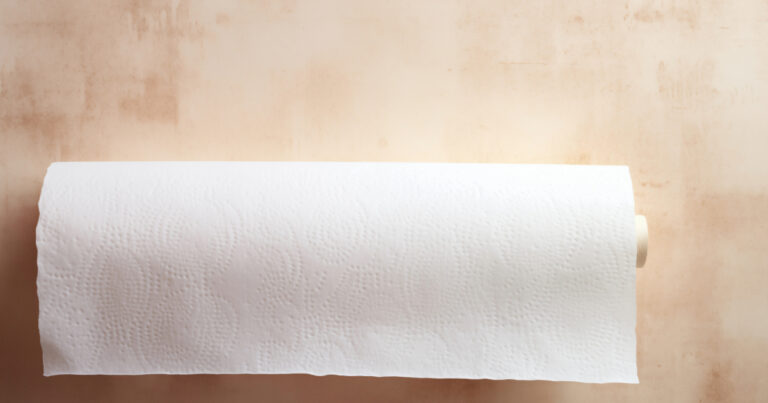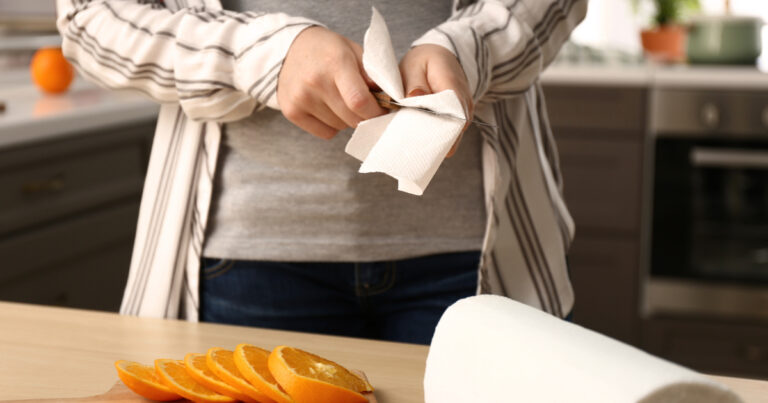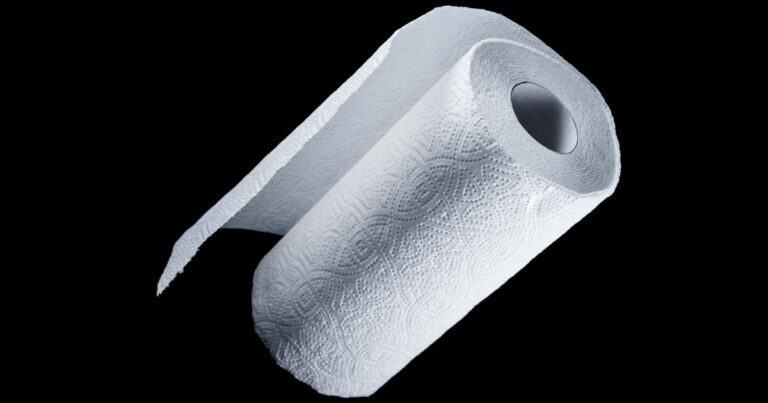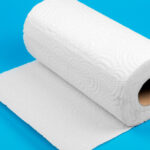Paper towels are a staple in most homes, used for cleaning, drying, and wiping up messes. However, in recent years, the price of paper towels has been steadily increasing.
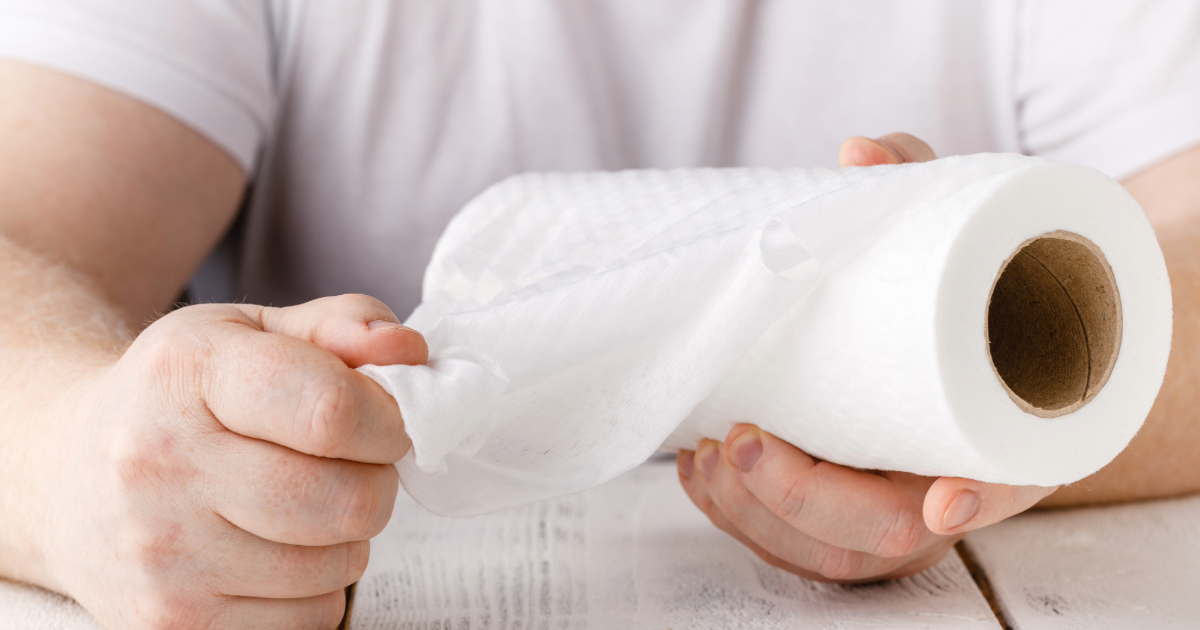
This has led many consumers to wonder – why exactly are paper towels so expensive?
Increased Manufacturing Costs
The manufacturing process for paper towels requires a significant amount of raw materials, energy, and labor. Here are some of the rising costs facing paper towel manufacturers:
- Wood pulp prices – Paper towels are primarily made from wood pulp harvested from trees. Prices for wood pulp have increased due to high demand and reduced supply.
- Transportation costs – Transporting raw materials and finished paper towel products has become more expensive due to high fuel prices.
- Energy costs – Producing paper towels is an energy-intensive process. Natural gas and electricity costs have been rising.
- Chemical costs – Chemical additives used during manufacturing like dyes, scents, and softeners have increased in price.
- Labor costs – Paper mills have faced labor shortages, leading to higher wages to attract and retain workers.
These factors make producing paper towels more costly for manufacturers. As a result, they pass on the increased costs to consumers through higher retail prices.
Raw Material Shortages
Paper towels are made from trees, specifically from wood pulp. Obtaining this key raw material has become more challenging:
- Reduced tree harvests – To promote sustainability, some jurisdictions have reduced allowable tree harvests. This restricts supply.
- High lumber demand – With high lumber prices in recent years, more trees are diverted to lumber production rather than paper production.
- Wildfires – Devastating wildfires in timber-producing regions like western North America have reduced tree supply.
- Disease/pests – Tree diseases and insect pests have damaged and killed trees in some areas.
The limited supply of trees makes wood pulp more scarce. Paper towel manufacturers must pay more to obtain the pulp they require, which translates into higher costs for consumers.
Supply Chain Disruptions
Bringing paper towels from factories to store shelves involves global supply chains. Recent disruptions have made paper towels more expensive:
- Shipping delays – Congestion at major ports has slowed deliveries of raw materials and finished products.
- Trucking shortages – A lack of truck drivers makes overland shipping more difficult. Rates are up.
- Warehousing issues – Getting warehouse space to store inventory has become pricier.
- Geopolitical factors – War, trade disputes, and sanctions restrict availability of materials.
These supply chain struggles make it costlier and more complex for manufacturers to get paper towels to market. To maintain their profit margins, they charge retailers more, who in turn raise prices for consumers.
Surging Consumer Demand
While costs have gone up for producers of paper towels, demand from consumers has also increased, further pushing up prices:
- Pandemic hygiene – COVID-19 prompted increased paper towel usage for cleaning and disinfecting.
- Working from home – With remote work, residential paper towel consumption has risen.
- Reduced sharing – People are less inclined to use shared hand towels in public restrooms.
- Stockpiling – Hoarding during the pandemic depleted inventories, prompting shortages.
With high demand chasing limited supply, paper towel makers can charge more. Retailers also raise prices to deter overbuying. This demand-supply imbalance keeps prices elevated.
Higher Costs for Recycled Paper Towels
Many paper towel manufacturers incorporate recycled content to reduce environmental impacts. But obtaining and using recycled paper has become pricier:
- Office closures – With remote work, fewer paper products from offices enter the recycling stream.
- Quality standards – Producing high-quality recycled paper towels is a complex process requiring specialized equipment.
- Collection costs – Collecting, sorting, and transporting used paper for recycling is expensive.
- Regulatory incentives – Some jurisdictions impose penalties on manufacturers for not meeting recycled content targets in their products.
The difficulties of sourcing suitable recycled paper pulp make it costlier for manufacturers. Consumers purchasing eco-friendly recycled paper towel brands feel the impact through higher retail prices.
Brand Reputation and Marketing
Well-known paper towel brands like Bounty and Brawny spend heavily on advertising and promotion to strengthen their reputations. These marketing costs contribute to higher prices:
- Celebrity endorsements – Big brands pay top dollar for celebrity sponsorships. These deals are factored into pricing.
- Prime shelf space – Brands compete for prominent in-store positioning with fees paid to retailers.
- Product differentiation – Manufacturers tout unique features like luxury texture to justify premium pricing.
- Loyalty programs – Rewards programs designed to foster brand allegiance come with administrative expenses.
While customers may pay more for brand recognition and loyalty perks, these premiums pad the cost of branded paper towels. Lesser-known value brands are typically cheaper.
Product Improvements
Today’s paper towels boast better performance and more features than previous generations:
- Softness – New production methods and materials make modern paper towels gentler on hands.
- Absorbency – Advanced technologies like air pockets and embossing channel moisture better.
- Strength – Reinforced paper towels are more durable, especially when wet.
- Printing – Vibrant printed designs are now cost-effectively applied to paper towels.
- Scenting – Sophisticated methods infuse paper towels with pleasing fragrances.
- Tearing – Innovations like perforations make paper towels easier to tear neatly.
While product improvements deliver added convenience and luxury, they also raise manufacturing costs. Consumers pay more for the premium quality of today’s paper towels.
Taxes and Tariffs
Government taxes and tariffs on paper products also inflate costs:
- Sales taxes – Most states and municipalities levy sales tax on paper towel purchases.
- Import tariffs – Some paper raw materials and finished products are subject to tariffs.
- Carbon taxes – A price on carbon emissions increases manufacturers’ energy costs.
- Corporate taxes – Manufacturers factor corporate tax obligations into their pricing.
These added taxes and duties make it more expensive to produce paper towels. Higher costs are passed from manufacturers to retailers and finally to consumers.
Key Takeaway: Taxes, supply chain issues, materials shortages, and production costs all contribute to higher paper towel prices. Strong consumer demand also enables price hikes.
How Much More Are We Paying for Paper Towels?
Just how much have paper towel prices risen in recent years? According to consumer price index data, here is the breakdown:
- 2017 to 2018 – 2.3% price increase
- 2018 to 2019 – 1.5% price increase
- 2019 to 2020 – 2.3% price increase
- 2020 to 2021 – 8.4% price increase
- 2021 to 2022 – 15.3% price increase
The most dramatic surge came during the pandemic between 2020 and 2021 when prices jumped 8.4%. Costs have continued rising sharply in 2022 as high inflation affects paper towels and other household staples.
Over the 5-year period from 2017 to 2022, the cumulative price increase for paper towels was a staggering 32.5%. To put that into perspective, a 6-roll pack of Brawny paper towels costing $15.47 in 2017 would cost over $20.50 today – an extra $5!
| Year | Price Increase |
|---|---|
| 2017 to 2018 | 2.3% |
| 2018 to 2019 | 1.5% |
| 2019 to 2020 | 2.3% |
| 2020 to 2021 | 8.4% |
| 2021 to 2022 | 15.3% |
This rapid price inflation demonstrates how multiple cost factors have converged to make paper towels more expensive for manufacturers to produce and more costly for shoppers to buy. Unless some of these underlying supply and demand dynamics change significantly, prices are likely to remain high.
Strategies for Saving Money on Paper Towels
While the reasons for rising prices are generally out of consumers’ control, there are some strategies shoppers can use to save money on paper towels:
- Buy in bulk – Larger package sizes are typically less expensive per roll or sheet. Stock up during sales.
- Choose store brands – Opt for the retailer’s private label paper towels rather than pricier national brands.
- Use coupons – Take advantage of paper towel coupons in flyers, apps and mailers.
- Reduce usage – Be more mindful about when you use paper towels versus rags or sponges.
- Buy recycled – Recycled paper towels are often comparable quality and help cut waste.
- Share costs – Split bulk purchases with other households to take advantage of lower prices.
With some diligent bargain hunting and reduced usage, consumers can offset some of the rising costs of paper towels. But the underlying price drivers show no signs of abating, so expenses will likely remain elevated.
Key Takeaway: Buying in bulk, choosing cheaper brands, using coupons and cutting usage can help consumers save on expensive paper towels.
Are Paper Towels Becoming a Luxury Item?
For some lower-income households, the price hike has effectively made paper towels more of a luxury item reserved only for occasional use rather than an everyday essential.
Multi-fold increases over just a few years represents a major change. Compounding the issue is that budgets for necessities like food and shelter are also under pressure from high inflation.
This “luxury” perception may endure unless prices stabilize. Some consumers worry that paper towels could become largely unaffordable, like other household items that were once cheap but are now costly premium purchases.
On the other hand, the convenient disposability and cleaning versatility of paper towels means demand should remain solid among shoppers who can shoulder the expense.
Manufacturers assert that today’s premium paper towels still represent good value considering their performance benefits. But not all consumers have the discretionary income to pay up for premium paper products.
Affordability issues will likely persist, especially for lower-income consumers. Some may even be priced out of the paper towel market completely until prices eventually decline.
Environmental Impacts of Paper Towel Usage
Aside from financial considerations, there are significant environmental impacts from mass paper towel consumption that should be considered:
- Tree harvesting – Large-scale pulpwood harvesting can damage forests.
- Water consumption – Paper production uses vast amounts of water.
- Wastewater – Manufacturing paper pollutes rivers and streams.
- Solid waste – Used paper towels fill landfills and release methane.
- Energy usage – Making paper towels consumes enormous energy.
- Carbon emissions – Manufacturing and shipping paper towels produces greenhouse gases.
Experts estimate a single roll of paper towels represents about 5.5 pounds of wood, 24 gallons of water, and 0.26 pounds of CO2 emissions.
As consumers bear increasing costs for paper towels, many are motivated to cut back for both economic and environmental reasons. Even small reductions in usage can multiply into meaningful progress when adopted widely.
Outlook Going Forward
Looking ahead, a few key factors will determine if paper towel prices moderate or continue trending higher:
- Inflation – If costs for raw materials, energy and labor moderate, price hikes could ease.
- Supply chains – Smoothing out global logistics and transport could improve availability and lower expenses.
- Demand shifts – A decline in paper towel demand could bring down prices.
- Recession – An economic downturn that reduces consumer spending power could force manufacturers to cut prices.
- Alternatives – If eco-friendly paper towel alternatives gain popularity, traditional brands may have to compete on price.
- Regulation – Governments could intervene with price controls, but such moves seem unlikely.
Barring a recessionary slowdown in demand, prices will remain high until suppliers can boost production volumes and achieve manufacturing efficiencies. For now, consumers should brace for further paper towel inflation.
FAQs
Why are paper towels more expensive than toilet paper?
Paper towels are generally more expensive than toilet paper for several reasons. Paper towels require thicker, fluffier paper pulp and processing into large sheets rather than rolls. More raw materials are used. Producing paper towels is also slower and more labor intensive. The additional steps of cutting, folding, and packaging also add costs versus toilet paper.
Should I switch to cloth towels instead of paper towels?
Switching to reusables like cloth napkins and towels can significantly reduce household paper costs. However it does require doing extra laundry. Calculate whether reduced paper towel purchases outweigh added water, energy and detergent costs for washing. Factor in your time as well. Cloth towels are best for light, absorbent uses rather than heavy messes. Maintain separate towels for kitchen versus bathroom uses.
Are recycled paper towels cheaper?
Some recycled paper towel options with decent quality can provide modest savings over premium virgin fiber brands. However, manufacturers assert that today’s ultra-soft, absorbent paper towels require certain types of virgin wood pulps. Overall, recycled paper towel pricing only provides slight savings at best, but is an eco-friendly choice.
Are paper towels becoming obsolete?
Despite environmental concerns, paper towels continue gaining in popularity globally due to their convenience. Unit sales are still rising. New product features also boost utility. And when used in moderation, paper towels generate less overall waste than constantly washing reusable rags. While not disappearing, expect somewhat restrained consumer usage if prices remain high.
Conclusion
Paper towel prices have soared over 30% in just 5 years due to materials shortages, production bottlenecks, strong demand, and many other factors. Prices will likely stay elevated until supply constraints ease. Consumers are paying more for this cleaning essential and even reducing usage when possible.
Manufacturers assert that the quality improvements of today’s paper towels justify the premium pricing. But for many shoppers, paper towels have become a reluctant luxury rather than an essential commodity.
With thoughtful shopping and reduced usage, consumers can hopefully weather the paper towel price storm without too much strain on their budgets.


